Boarding a train out of Berlin, the weather was grey and overcast. It felt appropriate. Visiting a former concentration camp isn’t something you feel a sense of holiday excitement for, it’s not a happy experience that boosts you, or will result in selfies for social media. It’s more important than that. The fact that it is difficult, that it is grey, and dark, and truly horrifying is the very reason you should do it.
If you’re in Berlin there is plenty of history in the city centre, and you can easily fill a week just in the city alone. But I really encourage you to consider a trip to Sachsenhausen if you can spare a day, it’s so rewarding in the most difficult of ways.
History of Sachsenhausen Concentration Camp
Sachsenhausen was the first major concentration camp, and became the model for future camps as well as a guard training camp. It was used by the Nazis from 1936 to 1945 and during this period, an estimated 200,000 people were interned here. An estimated 30,000 people died here. Above the gate are the words Arbeit macht Frei – or work makes you free. Despite the sign, no-one was ever released for hard work.
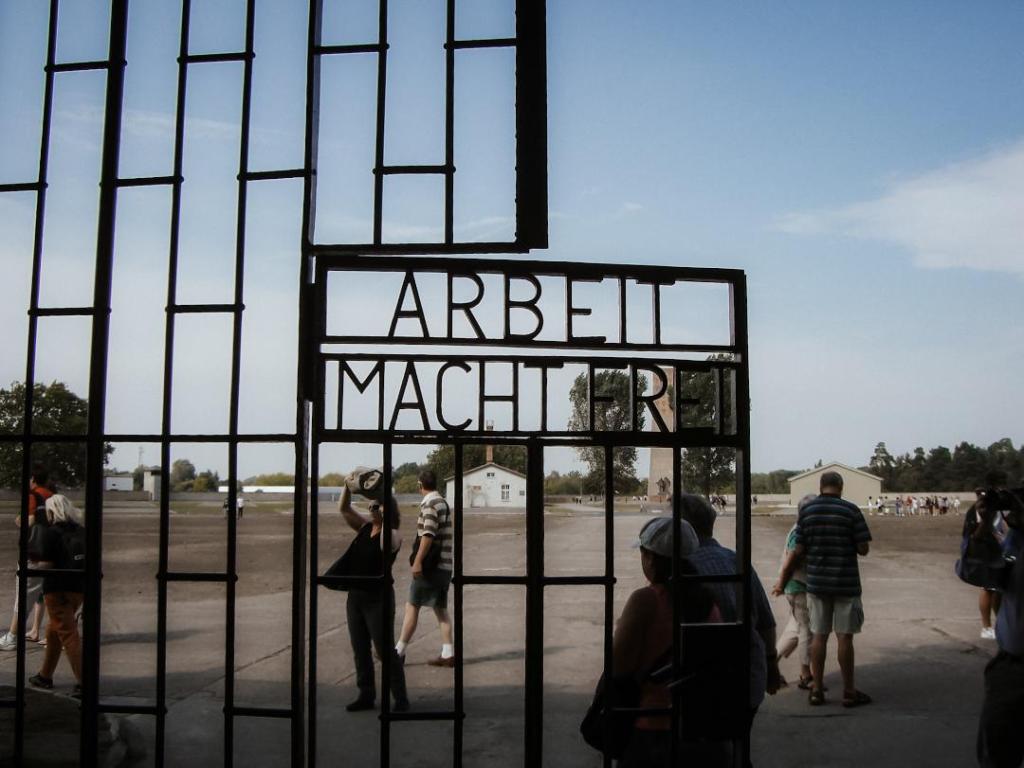
As an early camp, it was initially used as a jail for political prisoners and during the war, Sachsenhausen functioned mostly as a forced labour camp with work ranging from brick making to falsifying foreign currency. Although Soviet soldiers were executed in huge numbers here, Jewish prisoners were mostly transported to extermination camps elsewhere.
Sachsenhausen’s awful history didn’t end in 1945 and the end of WW2. From 1945 to 1950, after the Soviet ‘liberation’, part of the camp was used as a prison by the Soviet military. During this period, around 60,000 people were imprisoned here – around 12,000 of whom died. This history was kept secret for decades and only following the fall of Soviet backed East Germany in the 1990s were the mass graves from this period discovered. They were mostly children, women and old men.
I will never be able to fathom how some humans can have such little consideration for another human’s life. I will never understand how ordinary people could be so influenced, or so brainwashed, that other people can become so unimportant to them they see no issue in treating them like vermin, just because they have different beliefs or skin colour. I just can’t comprehend.
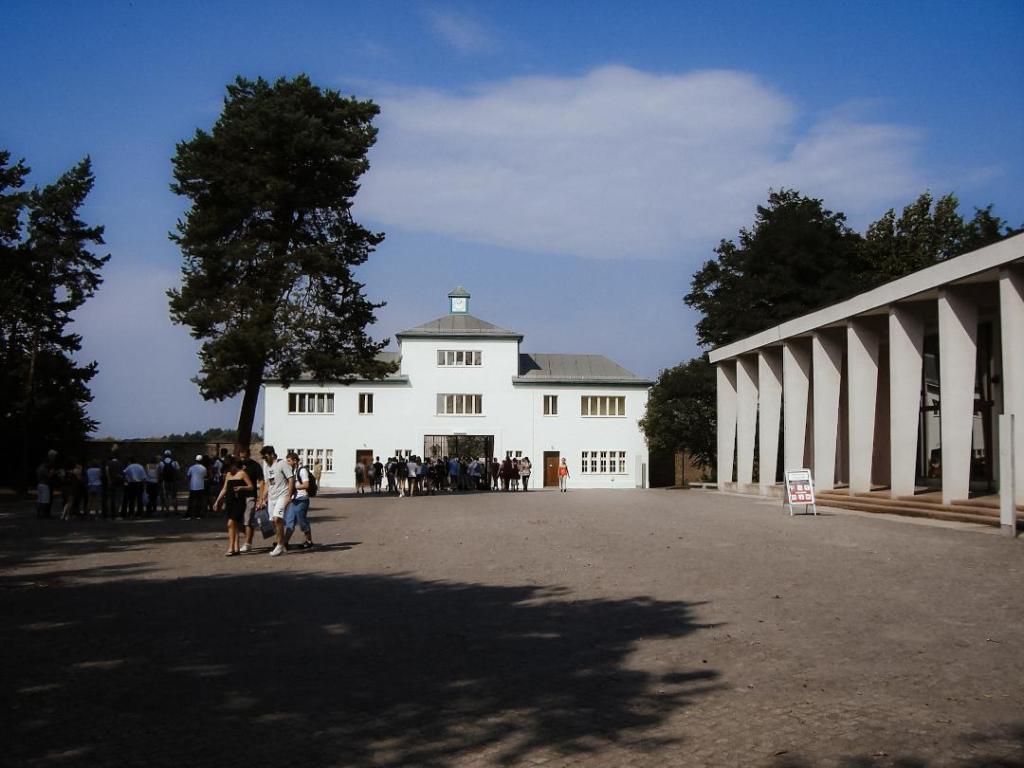
What to see at Sachsenhausen
Visiting Sachsenhausen requires a lot of reading and walking. Boards are in English and German, but even if you just read a few you would need around 3 hours at the site. It therefore really is worth at least half a day of your time. I recommend picking up a map at the entrance.
Just before the entrance to the camp is The New Museum, and this is focussed on the site’s use from 1960-1990. If you’re limited on time, this won’t be the priority of your visit so I recommend focusing your time on the more interesting exhibitions inside the camp.
Walking through the main gate, you can see the Guard Towers and Appellplatz with gallows at the back and tracks where the prisoners were forced to march for hours and hours. Within seconds, you can’t help but feel the despair.
Most of the former Barracks no longer exist – most buildings are copies, though white outlines mark the foundations of the originals. In barrack 38 is an exhibition on Jewish prisoners and 39 shows every day life in the camp. Adjacent to this is the Prison building, where the Gestapo and SS tortured, punished and murdered prisoners. The boards explaining the brutality are truly horrifying. The cells in the prison have several memorials for those who died in the camp.
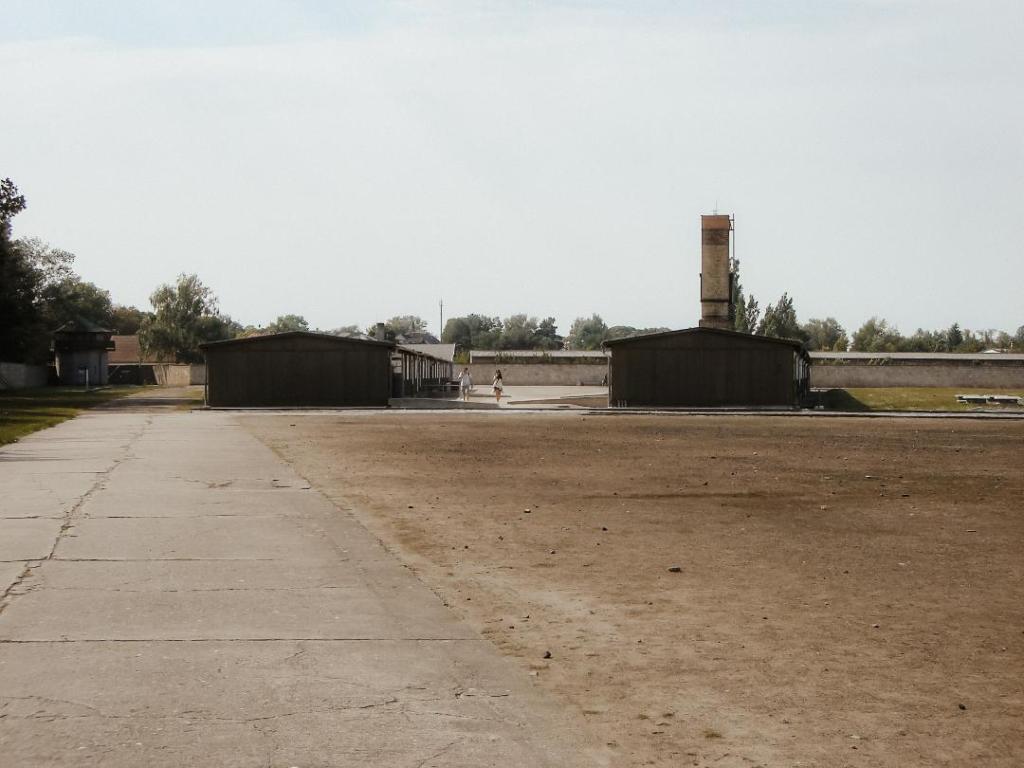
There is then also an exhibition in the former prisoners’ Kitchen, which I found to be the most interesting. If you have limited time, I’d recommend starting here. Also behind the kitchen is a memorial erected in 1961, with the 18 red triangles referring to the colours the prisoners had to wear. Given at the time, East Germany was communist and allied to the Soviets, it’s no surprise that the memorial emphasises the struggle of the communists against the Nazis, and that it blamed the crimes on the excesses of capitalism.

By far the most disturbing area of the camp is Station Z. This is the crematorium and mass murder area. Sachsenhausen did have gas chambers (mainly for experimentation and training), but the majority of murder was by bullet. The part that stuck with me was that before they were murdered, prisoners had a medical inspection – this was mainly to see if they had valuable gold tooth fillings. You’ll also see gaps in the walls – these were the holes that the prisoners were shot through.

To stand where so many lost their lives is haunting. Some visitors at this point were crying or visibly shaken. I remember standing there with a chilling feeling running down my spine. I couldn’t stay there long.
Finally, there is also a pathology building, mortuary cellars and infirmary to the left of the main entrance. These house a huge exhibition on the medical crimes in the camp. Again, some of the experiments were utterly horrific and I cannot even begin to comprehend the horrors these prisoners went through.
Why go to Sachsenhausen Concentration Camp?
Go to learn about the horrors of the past. Go to learn how important it is we don’t forget so that never again are such crimes committed. Go to have a reality check – maybe you don’t have the house you’d like, or the money you’d like, or the life you’d like – but at least you have a life, at least you are free. Go to honour the victims and hear their stories, remember them and pay your respects to them. Go to reflect, to rethink, to change your outlook for a bit. And then leave, grateful to live in a time of peace, grateful for the day, and the next day and hopefully many more.
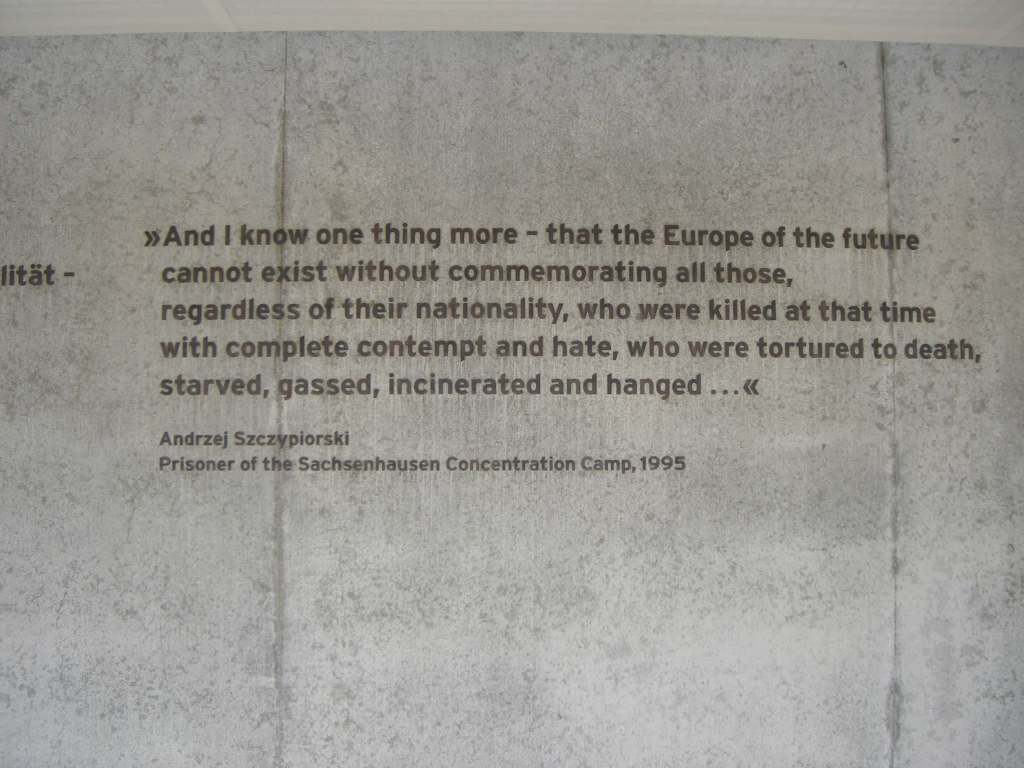
Getting to Sachsenhausen
Sachsenhausen is most easily reached by train. There are 2 train options from Berlin to reach Oranienburg, where the site is located:
- The S1 runs from Berlin 3 times an hour. Obviously you can get on at any S1 stops, including Friedrichstraße, Brandenburger Tor and Potsdamer Platz. The train takes around 45 minutes.
- There is also the quicker RE5 (Regional Express) train from Berlin Hauptbahnhof to either Stralsund or Rostock (you just need to remember to get off at Oranienburg). This train takes 25 minutes.
As always when writing about getting trains in Germany, please remember to validate your ticket. You have to hold your ticket under the little grey boxes on the platform to get it punched, otherwise you may face fines from on train ticket collectors. I’ve had my share of fun with them – just stamp your ticket.

From Oranienburg train station, there are then three options to get to the Sachsenhausen memorial site.
- You can take a bus (804 – direction Malz or 821 – direction Tiergarten). You have to get off at stop Gedenkstätte (Memorial).
- You could take a taxi, which should cost around 10 Euros.
- You can walk – it’s 2.5km so takes around 20 minutes. This was the option we took as it’s a flat and easy walk. Though the site then does also require a lot of walking too.
Thank you for reading. I appreciate this post isn’t a happy, beautiful pictures, post. But travel isn’t just that, and I think it’s equally as important to share experiences like this. Stay safe and happy travelling everyone.

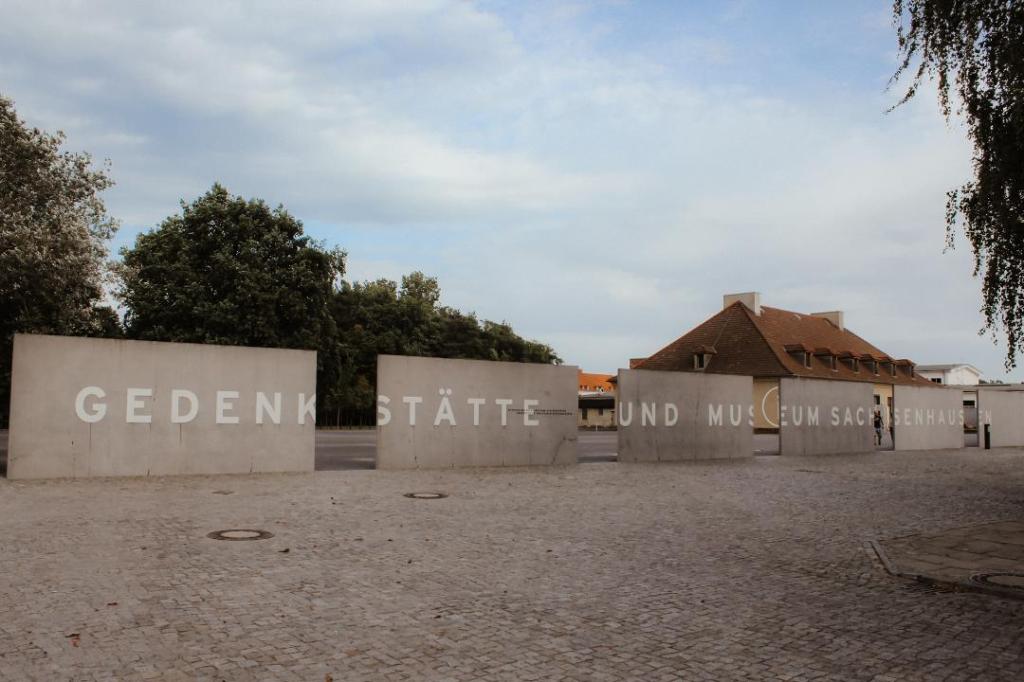
Leave a comment